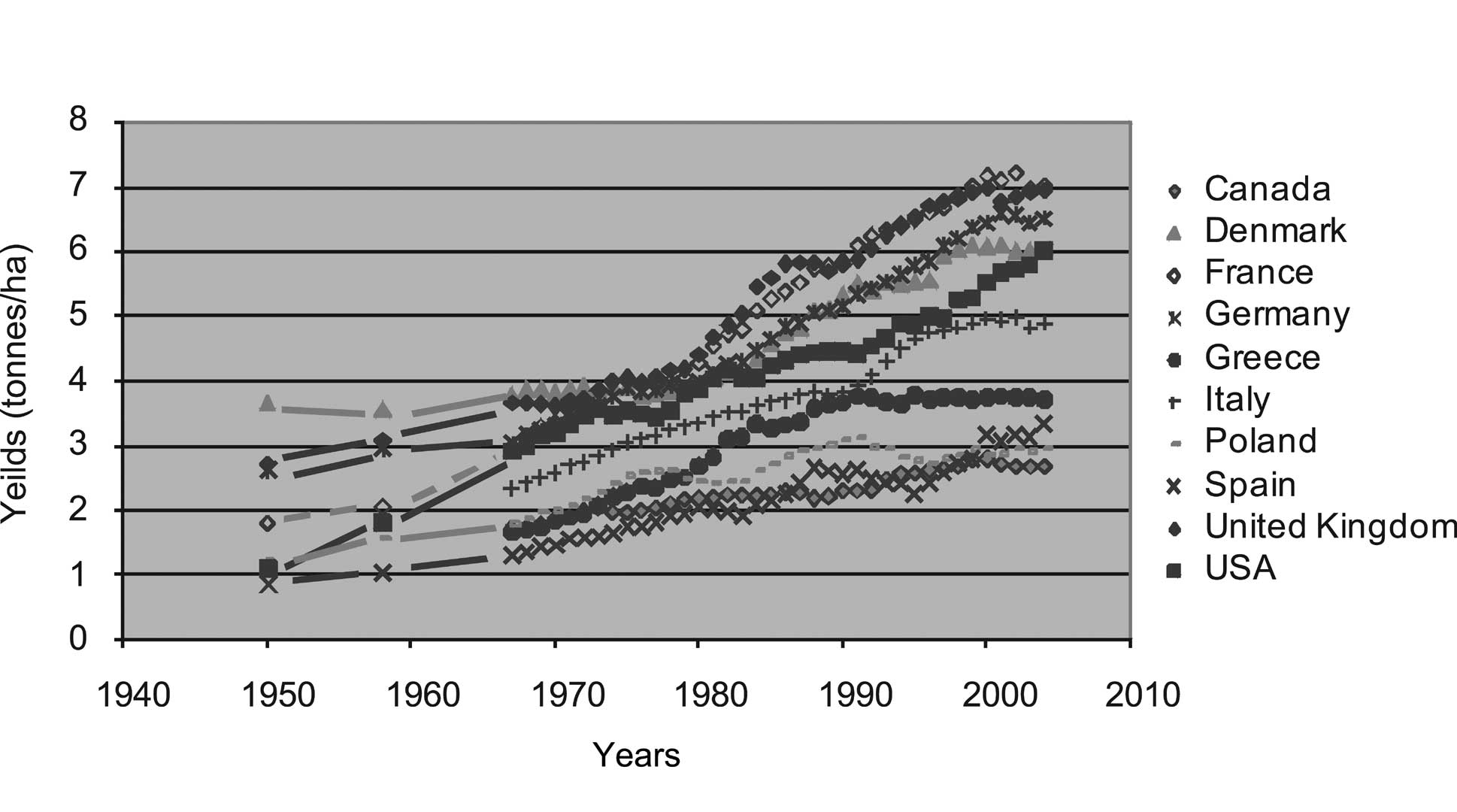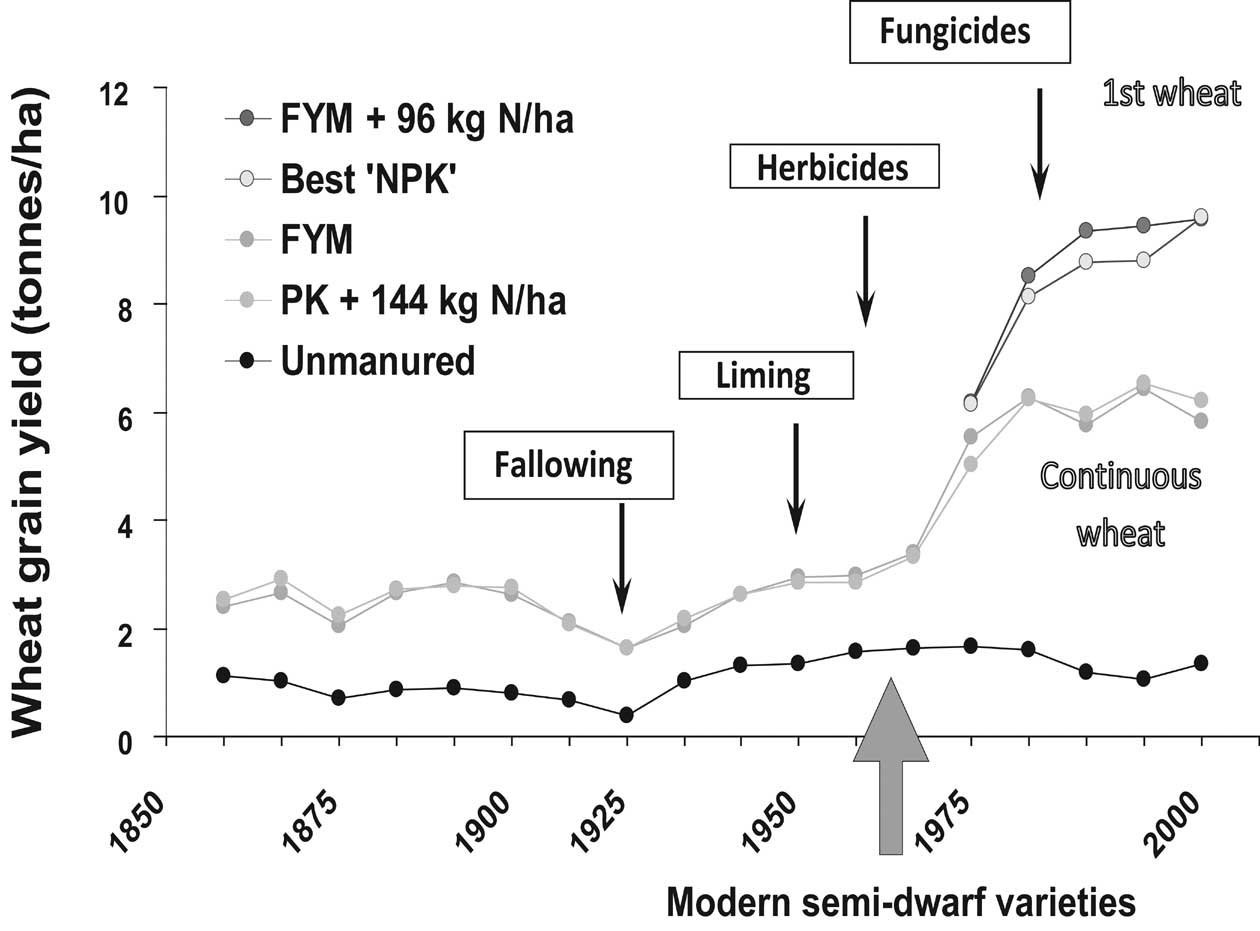
| Previous | Return to table of contents | Search Reports | Next |
| « Back to weltagrarbericht.de | ||
Changes in Agriculture and Food Production in NAE Since 1945 | 39

Figure 2-8. Wheat yields in ten NAE countries since 1950. Source: FAOSTAT, 2006; FAO Yearbooks 1950 and 1958. |
||
|
||
2. Increased availability of fertilizers and increased knowledge of how to use them; |
|
development of national agricultural advisory systems; and These advances are summarized in data from the long-term Rothamsted wheat experiment (Figure 2-9), which clearly shows the role played by a number of different inputs in delivering higher yields. |

Figure 2-9. Yield responses on the Broadbalk winter wheat experiment at Rothamsted Research (UK) in relation to the introduction of novel agronomic practices. Source: Updated from Poulton, 1995.
| Previous | Return to table of contents | Search Reports | Next |
| « Back to weltagrarbericht.de | ||